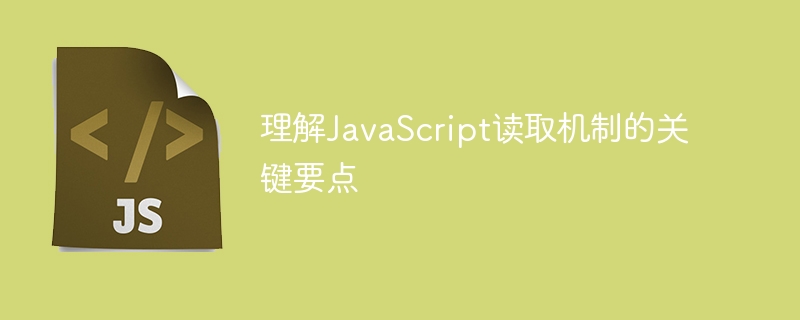

JavaScript is a commonly used programming language that is widely used in web development and front-end technology. In the process of learning JavaScript, understanding its reading mechanism is a very important part. The reading mechanism of JavaScript involves concepts such as variable declaration, scope chain, and closure. Illustrating these key points through specific code examples will help deepen the understanding of the JavaScript reading mechanism.
In JavaScript, variables can be declared using the var, let and const keywords. These keywords differ in the scope and lifetime of the variable.
var keyword to declare variables var x = 10;
function testVar() {
var x = 20;
console.log(x); // 输出结果为20
}
testVar();
console.log(x); // 输出结果为10In the above code example, var declares the variable x There are separate scopes inside and outside the function. The variable x declared by the internal function through the var keyword will not affect the x in the external function.
let keyword to declare variables let y = 30;
function testLet() {
let y = 40;
console.log(y); // 输出结果为40
}
testLet();
console.log(y); // 输出结果为30Variables declared using the let keyword have block-level scope, and those declared by internal functions Variable y will not affect y in the external function.
const keyword to declare constants const z = 50; // z = 60; // 尝试修改常量会导致错误 console.log(z); // 输出结果为50
Constants declared using the const keyword are immutable and cannot be reassigned. This declaration method is suitable for constant values that do not need to be modified.
The scope chain of JavaScript refers to the fact that when functions are nested, internal functions can access variables in external functions. The formation of scope chain is achieved through function scope and lexical scope.
var a = 100;
function outer() {
var b = 200;
function inner() {
var c = 300;
console.log(a); // 100
console.log(b); // 200
}
inner();
// console.log(c); // 出错,无法访问c变量
}
outer();In the above code example, the inner function inner can access the variables a and b in the outer function outer , but c cannot be accessed because the scope of c is limited to the inner function.
A closure refers to a function that can access variables in the scope of an external function. Through closures, we can implement some useful functions, such as saving the state of local variables, implementing modularity, etc.
function add(a) {
return function(b) {
return a + b;
};
}
var addFive = add(5);
console.log(addFive(3)); // 输出结果为8In the above code example, the add function returns an inner function, and the inner function uses the variable a in the outer function, forming a closure. Through closure, we can save add(5) for subsequent calls.
Through the above specific code examples, we can better understand concepts such as variable declarations, scope chains, and closures involved in JavaScript's reading mechanism. A deep understanding of these key points will help us write and understand JavaScript code better.
The above is the detailed content of Key points to understand the JavaScript reading mechanism. For more information, please follow other related articles on the PHP Chinese website!




